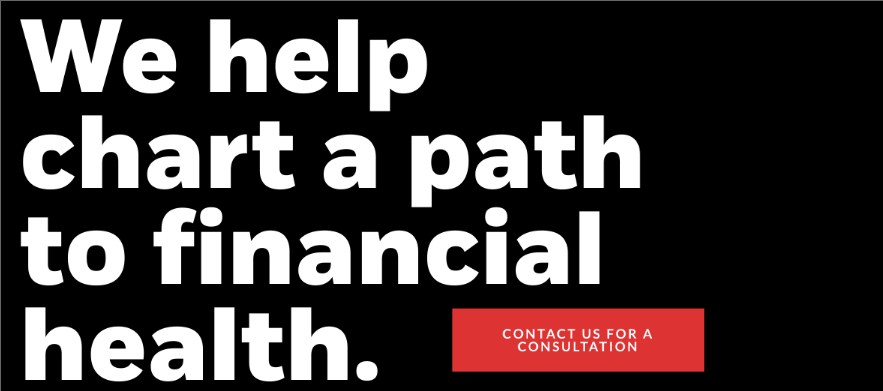The Top Employee Benefits Trends for 2024 that companies should understand to stay competitive
As the 2024 year has just begun, it’s an excellent time to reassess your employee benefits as a small business owner. Offering competitive employee or fringe benefits is critical to attracting and keeping great talent. However, navigating the benefits maze can be incredibly daunting when short on time and resources.
The new year offers a chance to understand your workers’ needs and update your offerings accordingly. Post-pandemic priorities have shifted, with employees now emphasizing mental and physical health, flexibility, and work/life balance. You can boost employee engagement and retention by embracing these trends in your benefits package.
Staying ahead of the curve on employee benefits is crucial for today’s businesses. The 2023 Paychex Pulse of HR Survey confirms it: top talent demands attractive benefits, competitive pay, and flexible schedules.
What Are Included In Employee Benefits?
Beyond regular wages, companies offer employees additional compensation called benefits. These non-salary perks range from legally required offerings like Social Security and workers’ compensation to voluntary extras that employers can tailor to their staff needs. Common voluntary benefits aim to promote long-term financial and physical wellbeing, including retirement savings plans, health insurance, and paid vacation days or sick leave.
The paychex survey listed out some of the top trends that companies are thinking about offering their employees. Catching the wave of employee benefits trends isn’t just good for business, it’s a ticket to happier, healthier, and more productive employees who stick around.
Improving Healthcare Affordability
Healthy employees are productive, creative, and engaged. But rising costs and busy schedules often create barriers to essential care, leading to deferred issues and higher future claims. That’s why proactive employers make healthcare affordable and accessible – it shows they care about employees’ well-being, not just bottom lines.
The Strategy:
- Go beyond basic plans: Offer employee health benefit accounts to empower employees to save on healthcare expenses.
- Double win: These accounts also benefit employers by reducing taxes and curbing healthcare costs overall.
Investing in healthcare isn’t just about providing benefits, it’s about building a healthier, happier, and more productive workforce.
Paid Time Off and Support for Onsite, Hybrid, and Flex Work Environments
Offering paid time off (PTO) and flexible work arrangements can help improve employee satisfaction and work-life balance. A well-defined and consistent PTO policy is crucial for any company. It clarifies how employees accrue and utilize their time off, ensuring transparency and fairness.
The pandemic shook things up for countless workplaces, sending many employees into the uncharted territory of remote work. But as restrictions lifted, businesses began welcoming their teams back, navigating a newfound hybrid landscape. Now, with many employees settling into a mix of in-office and remote work, your approach to this new normal can make a critical difference in employee retention.Offering flexible work schedules, job sharing, or abbreviated work hours to onsite employees can also be an attractive benefit.
Embrace Flexibility:
One size doesn’t fit all. Offering options like hybrid schedules, flex hours, and even job sharing can show your employees they have a say in how they work best. This flexibility fosters trust and empowers them to maintain a healthy work-life balance, leading to happier and more productive employees.
Level the Playing Field:
Consistency is key. Ensure policies and expectations are clear and fair for both on-site and remote employees. This avoids resentment and promotes a sense of teamwork, regardless of location.
Invest in the Space:
Your office should be more than just four walls and desks. Create a comfortable and stimulating environment that encourages collaboration and focus. Designate areas for brainstorming sessions and quiet zones for individual work. Invest in ergonomic furniture and ensure proper lighting and temperature control. A happy and healthy environment improves employee well-being and performance.
By prioritizing flexibility, fairness, and a thriving work environment, you can create a post-pandemic workplace that attracts and retains top talent.
Upskilling, Reskilling, and Professional Development
In today’s competitive landscape, business leaders know that happy, engaged employees are the key to success. This is especially true for Gen Z, the rising generation entering the workforce. They value continuous learning, growth, and purpose in their careers, and small businesses that can nurture these aspirations stand out.
Meeting Expectations, Boosting Retention:
Instead of stagnant roles, offer your employees opportunities to expand their skillset and advance their careers through:
- Learning and development programs: Provide access to courses, workshops, and online resources that allow employees to learn new skills or deepen existing ones.
- Job rotations: Rotate employees through different departments or projects to broaden their experience and expose them to diverse aspects of the business.
- Job expansions: Give employees the chance to take on additional responsibilities or projects within their current role, allowing them to stretch their abilities and contribute more meaningfully.
- Peer coaching: Encourage peer-to-peer learning and mentorship programs where employees can share knowledge and support each other’s growth.
The Rise of Family-Friendly Benefits
Raising a child or caring for an aging parent while holding down a full-time job can feel like an impossible act of juggling. Between daycare costs, healthcare expenses, and the sheer exhaustion of managing it all, many employees are left feeling burned out and overwhelmed.
Smart Businesses Invest in Family-Friendly Benefits
Recognizing the impact on employee well-being and performance, businesses are increasingly expanding their family-friendly benefits beyond the bare minimum required by law. This trend isn’t just about altruism; it’s a smart investment in a happier, healthier, and more productive workforce.
Here are some ways employers can show they care about their employees’ families:
- Paid Parental Leave: Providing generous leave (beyond the bare minimum) for both mothers and fathers allows them to bond with their new baby and adjust to parenthood without financial anxiety.
- Paid Adoption Leave: Recognizing the challenges of adoption, offering paid leave for this journey demonstrates an employer’s commitment to diverse families.
- Surrogacy Benefits: Covering the costs associated with surrogacy shows support for employees building families through this less traditional path.
- Dependent Care Flexible Spending Accounts (DCFSA): These accounts allow employees to set aside pre-tax dollars for childcare and eldercare expenses, reducing their financial burden.
- Reproductive Health Benefits: Expanding coverage to include areas like family planning, high-risk pregnancy care, infertility treatment, and menopause support acknowledges the diverse needs of employees across all stages of life.
Retirement, Debt Payoff, and Financial Security Benefits
Financial anxieties plagued many during the pandemic, and the echoes of rising inflation and recession fears still linger. Recognizing this ongoing struggle, financial wellness has become a top priority for both employees and employers in 2024. Retirement planning is a key piece of a competitive employee benefits plan. Small businesses have accessible options to provide this, including SEP IRAs, SIMPLE IRAs, and 401(k)s. Each features distinct pros, cons, and regulatory needs. Thus, wise firms research plans alongside financial advisors to determine the optimal match that promotes retirement readiness for their workforce and business model.
Taking charge isn’t just a personal aspiration; it’s a growing trend in employee benefits. Businesses are stepping up by offering:
- Retirement plans with generous company matches: Providing a head start on long-term financial security is a valuable perk for anyone, regardless of age.
- Student loan and debt repayment programs: Helping employees tackle the burden of student loans or other debts offers immediate financial relief and reduces long-term stress.
- Financial wellness resources: Workshops, counseling services, and online tools empower employees to make informed financial decisions, manage budgets, and plan for the future.
Diversity, Equity, and Inclusion (DEI)
Ignoring the call for Diversity, Equity and Inclusion (DEI) in employee benefits is no longer an option. It’s an investment in attracting and retaining top talent, especially valuable in today’s tight job market. The 2023 Paychex Pulse of HR Survey confirms this, revealing different generations prioritize different aspects of DEI when choosing an employer.
Hitting the Right Notes:
- Gen Z: Communicate your genuine commitment to diversity. Showcase your efforts through social media, recruitment materials, and company events.
- Millennials: Focus on pay equity. Be transparent about salary ranges and demonstrate a commitment to equal pay for equal work.
- Gen X: Highlight your inclusion efforts and focus on both pay equity and increases. Show them you value their experience and are invested in their long-term growth.
Conclusion
Administering employee benefits involves navigating a web of legal and regulatory compliance issues. Employers must keep abreast of reforms and directives across several key laws. These notably include the Affordable Care Act governing healthcare, ERISA overseeing retirement plans, and FMLA mandatory leave policies. Nevertheless an attractive and thoughtfully-designed benefits package can provide a key competitive edge for employers seeking to engage top talent in a dynamic job market. As companies strive to retain and motivate employees, staying atop the latest in benefit innovations and crafting offerings strategically tailored to one’s workforce proves pivotal. Thomas Huckabee, CPA of San Diego is a full-service accounting firm- helping your company with employee benefits is right up our alley. Please contact us for a free consultation.











